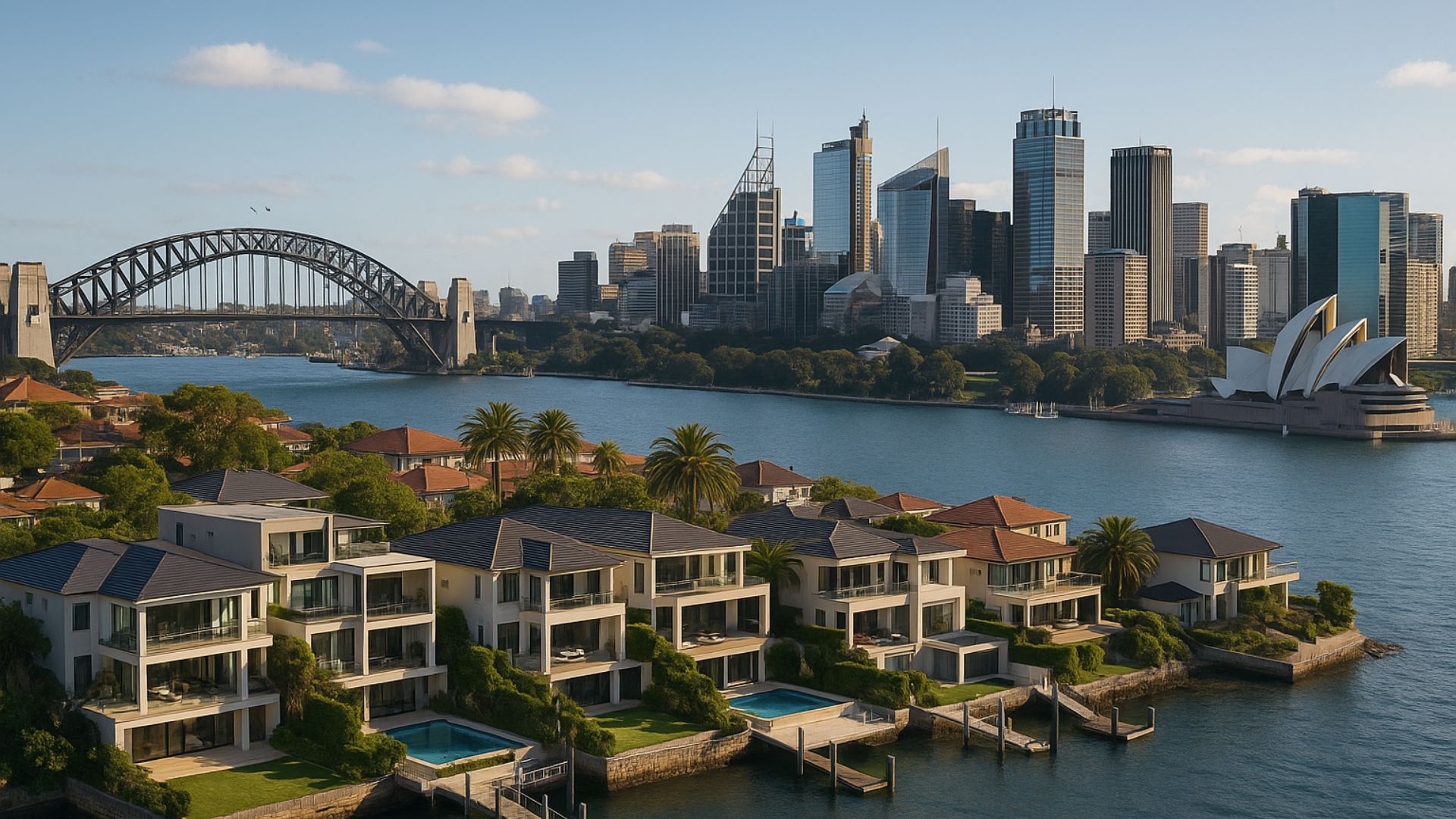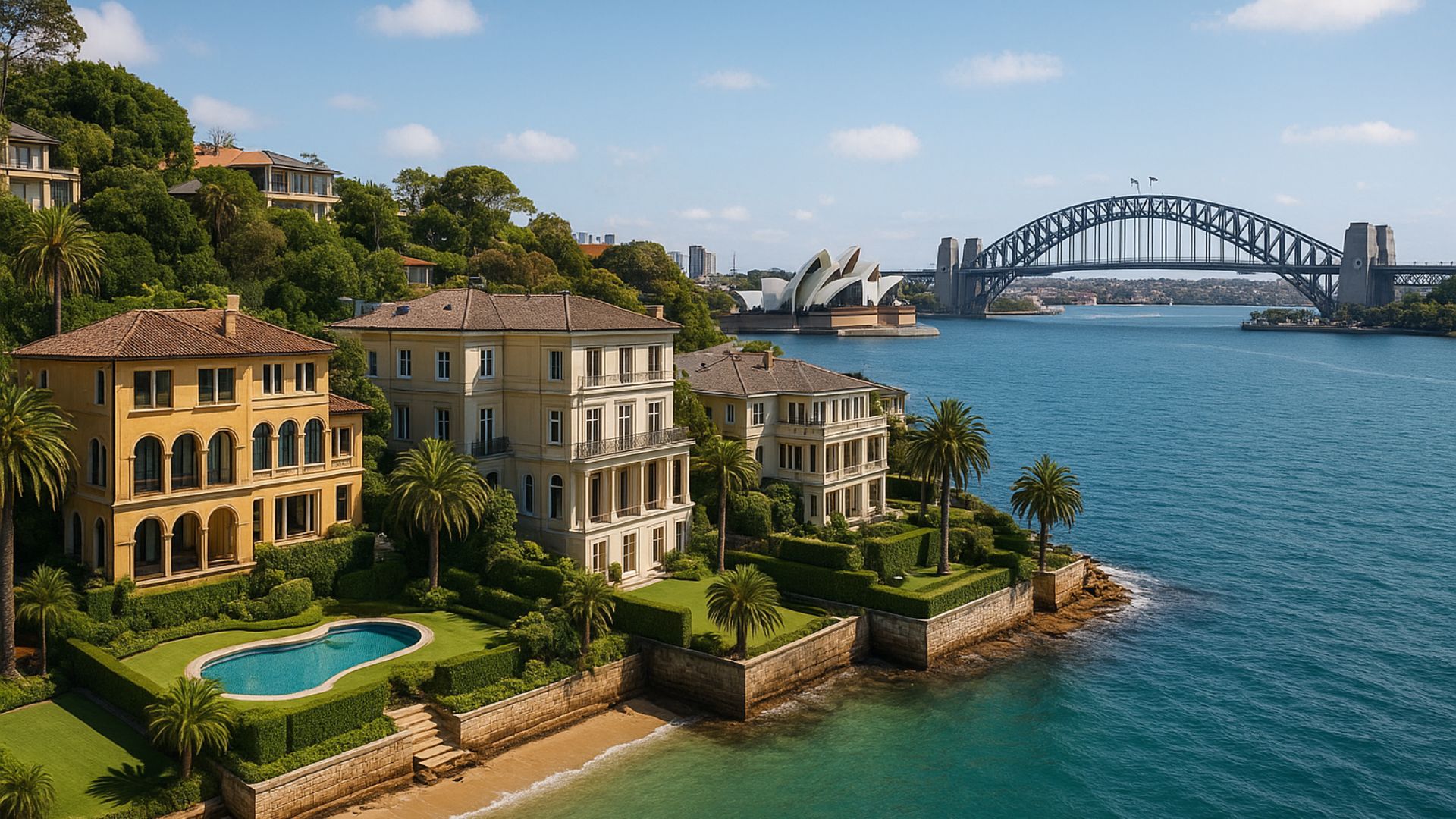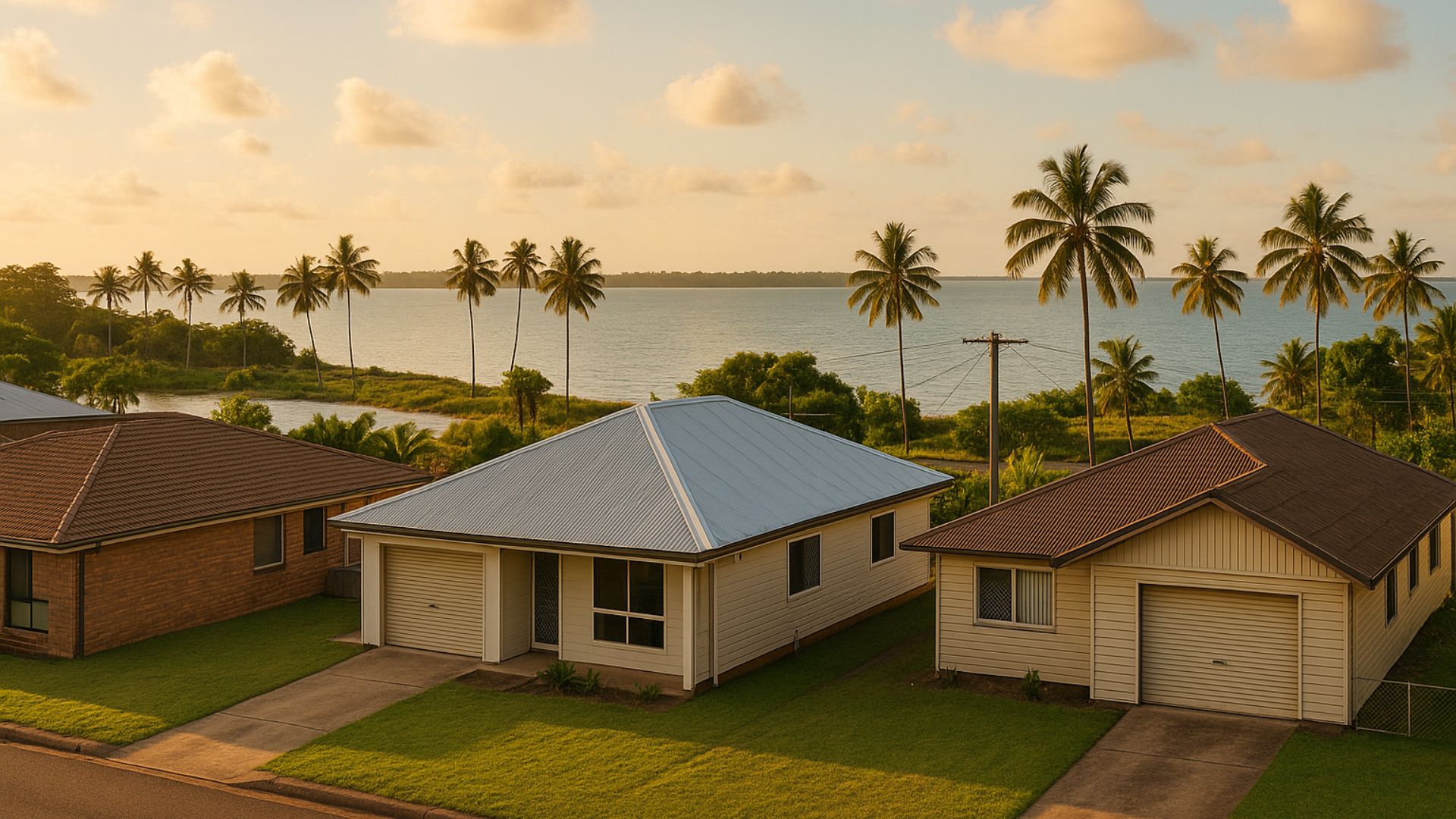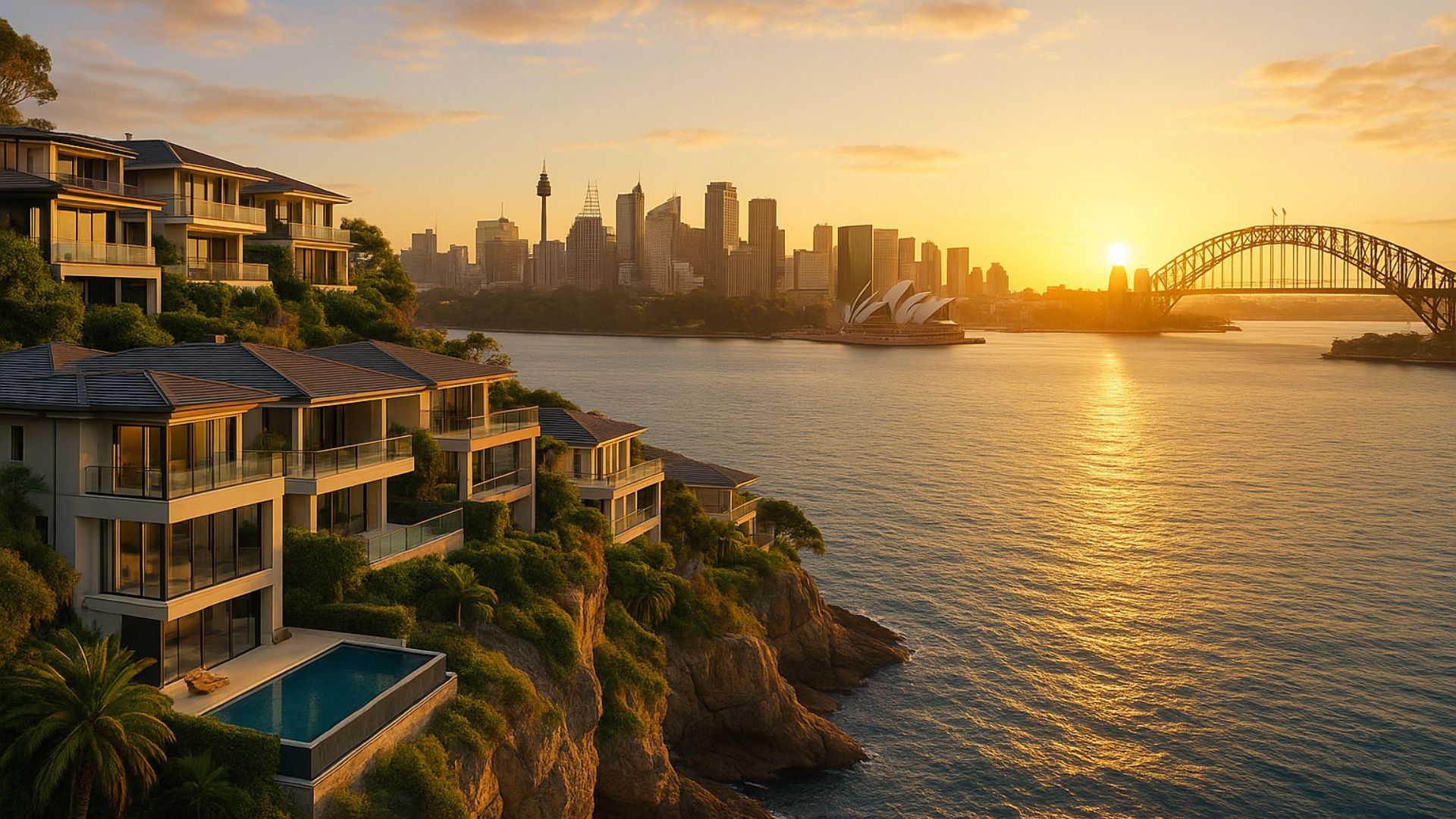If you’ve ever felt your eyes water at an Australian auction, you’re not imagining it. Across several credible benchmarks, Australia stands out as one of the world’s most expensive places to buy a home. One recent global comparison of 60 countries put Australia sixth place for the price of a ‘typical’ apartment purchase cost per 100m², ranking behind Norway, Austria, Luxembourg, South Korea, and most expensive, Switzerland. This result certainly underscores just how expensive Australian housing has become on a world stage.

However, data compiled for a ‘BestBrokers’ report into global real estate finance and property costs found that when it came to factoring in real wealth, Australians might be actually better off than it first appears.
When we discuss affordability, we need to look at both, the price of Australian property, alongside average weekly wages. According to the Australian Bureau of Statistics (ABS), average weekly earnings for full-time adults sat at $2,010 in May 2025. Meanwhile the mean dwelling price across Australia reached about $1 million in the March quarter of 2025 (with big differences when comparing between states and territories). That gap—between what a typical full-time worker earns and what a typical home costs—explains why our property market consistently screens as “expensive,” especially in the biggest cities.
Why is Australian property amongst the world’s most expensive?
High land values are where Australians want to live.
We are one of the world’s most urbanised nations, with a heavy concentration along the east coast and the population is even denser in a handful of coastal cities. Harbourfronts, beaches and Australia’s natural topography creates both amenity and natural supply constraints, which our planning overlays reinforce creating amplified land prices in the well-located suburbs.
We are a popular place to live for migrants.
Australia’s persistent population growth, driven by migration has increased demand for property and pushed property prices further on an upward trajectory.
Construction bottlenecks and costs.
The National Housing Finance and Investment Corporation (NHFIC) has warned there is shortfall in supply of new dwellings because of capacity constraints (materials, labour) and the time it takes to convert zoned land into completed homes. In practice, this means even strong pipelines can fall short, and supply lies well below the population-led demand.
Tax and financing settings.
For domestic investors, interest deductions against rental income (negative gearing) and the capital gains tax discount have long shaped incentives. Foreign investors love buying our property because even though they currently face tighter rules—including a temporary ban on buying established dwellings and higher application fees, with avenues focused on new/off-the-plan stock—the policy mix still channels capital into the markets over long periods, especially when credit is plentiful. Our markets also are recognised amongst the world’s most transparent real estate markets, a feature that encourages global capital participation and reduces the risk for foreign investors.
How we stack up internationally
When we focus on the two key variables of the housing affordability global comparison- average full-time weekly earnings of $2,010 and a mean dwelling price near $1.0m. Even allowing for dual-income households and historically low unemployment, that’s a hefty multiple of income, which means we are hypersensitive to interest-rate cycles, and this also pushes many first-home buyers towards units, townhouses, or outer-metro locations. It also forces tricky trade-offs between commuting time, access to amenities, and property size.
Why global investors favour Australian property.
Despite higher entry prices, Australia ticks a lot of the boxes for international investors:
- Economic and policy stability. Australia has a strong and mature banking system alongside strong laws and policies governing our economic sector.
- Lifestyle and liveability. Sydney, Melbourne, Adelaide, and Perth consistently rank near the top of global liveability indices, which supports steady demand for both owner-occupier and rental housing.
- Population growth. Australia is population for international migration and we have a constant inflow of students and temporary workers creating a tight rental market, particularly in inner-city and middle-ring unit precincts.
- Strong yields. While Sydney’s house yields are slim, apartment yields in other capitals can be very favourable. Regional centres can provide great yield and cashflow for foreign investors.
- Scalable markets. The revival of Perth and Brisbane has reminded investors that Australia is not a one-city story; diversified exposure across cities and product types can spread risk.
Where are the most expensive homes (and why)?
It is important to realise, that the lack of affordable properties is not spread evenly across the country. Sydney remains the nation’s most expensive market, while Darwin continues to rein as the cheapest. In Q3, 2025, median dwelling values were around $1.16m in Sydney, roughly $922k in Melbourne, $900k in Canberra, $898k in Brisbane, $804k in Adelaide, $791k in Hobart, $774k in Perth and $519k in Darwin (noting these values move monthly, but the ranking across capitals usually remains consistent).
The county’s priciest properties are concentrated in prestige, amenity-rich enclaves with natural constraints on new supply. The most expensive property markets are in Sydney’s eastern suburbs and harbourfront (Point Piper, Vaucluse, Bellevue Hill), the Lower North Shore and select Northern Beaches, plus Melbourne’s Toorak and Brisbane’s inner-east riverfront. These suburbs can host the country’s wealthiest due to the combination of blue-chip school catchments, scarce land, protected view corridors, and a deep buyer pool—both local and international. These properties offer a lifestyle amongst the rich and famous alongside their priceless Harbour Bridge, Opera House, or water views and beach access. There is limited supply of properties in this area, and everybody wants to buy here globally.
At the extreme luxury level, Knight Frank’s 2025 Wealth Report compared globally that US$1 million buys just 45 m² of prime property in Sydney, compared with 87 m² in Melbourne and over 100 m² in Perth and Brisbane. Internationally, that same US$1m buys 19 m² in Monaco, 22 m² in Hong Kong and 32 m² in Singapore.
Where are the cheapest homes (and why)?
At the other end of the spectrum, affordability is concentrated to the smaller capitals and the growing regional towns. Darwin’s property market sits in a very different position compared with Sydney, Melbourne or Brisbane and consistently posts the lowest capital city median values, which reflects its smaller economy, lack of job opportunities, climate, socio-economic status, and that it’s a large share of lower-density homes. PropTrack and other trackers have repeatedly flagged Darwin’s median around the low-to-mid $500,000s across 2024–25.
Darwin’s smaller population (approx. 150,000 in the urban area) means smaller buyer pool and less competition translating to lower property prices. The tropical climate (heat, humidity, and monsoonal rains) in Darwin is quite unfavourable as well as its geographical distance and lack of accessibility to other major Australian cities.
Darwin’s economy is also quite volatile because it is heavily linked to defence, government services, mining, and infrastructure projects. A lot of the people living in Darwin are not permanent residents, but are Fly In, Fly Out workers (FIFO).
The limited employment opportunities, reduces the demand for permanent migration.
For investors, whilst the yields can look attractive in Darwin, the capital growth has historically been very weak and more volatile.
If you’re looking for an affordable investment property, what you can learn from Darwin’s historical property price movements, is to look for cheaper properties that have all the investment grade markers, that Darwin does not.
If buying rurally, look for jobs growth and good job opportunities, a comfortable climate, an economy that doesn’t rely on limited industries, and of course a growing population.
Will Australia always be “top-six expensive”?
Nothing in housing is permanent, but several forces are hard to unwind. The concentration of coastal demand, planning frictions, construction constraints, and continued international migration means Australia is likely to remain “expensive” when comparing property prices on a global scale.
Australia’s property markets are expensive because our most desirable land is scarce and heavily bid for, our population keeps growing, and our lifestyle is enviable around the world.
We have strict planning and construction laws, and supply is struggling to keep up with the demand.
In the foreseeable future, there are no indicators that Australia’s property markets are going to “crash” or becoming more affordable when comparing wage-price growth. This is why Australia is so attractive for international investment.
****
Thank you for reading our blog on Australia’s Post-Election Property Market. Make sure you head over to our YouTube channel by clicking here to discover more educational insights to level up your property investing including our latest video: Australian Property Market 2025 Forecast.
Disclaimer:
Aus Property Professionals Pty Ltd retains the copyright in relation to all the information contained on its website and in this guide. This guide, and any content provided in addition, or linked to resources, is general information only and not investment advice. As everyone’s individual situation is different, we advise individuals to always seek advice from relevant professionals such as legal, financial, accounting, and investing experts.
The intention of this guide is to be used for general information purposes only, in addition to your personal research and due diligence. We do not take any responsibility for any actions taken as a result of this guide as any actions should always be taken with consultation with relevant professionals who take individual circumstances to account.
Past performance doesn’t guarantee future results.
We have compiled the information contained in this guide from online resources, our research, and consultations, and we cannot guarantee the complete accuracy of this information, and we will always reference the resources where the data and information was derived.





